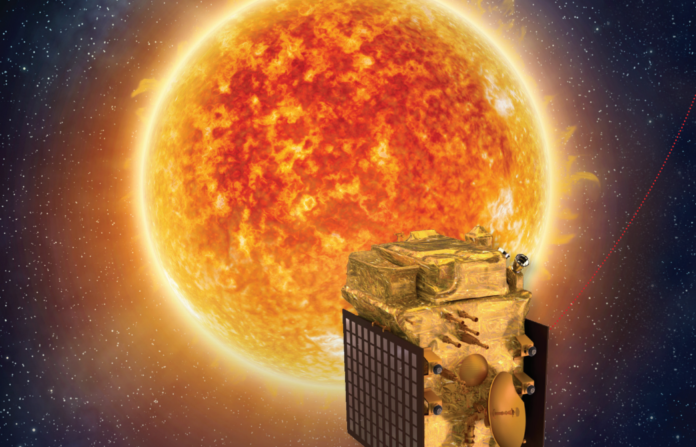ISRO’s Aditya-L1 mission will study the Sun from a special point in space, helping us understand solar activities and their effects on Earth’s technology and environment.
- 2nd Sep, 2023
ISRO is all set to launch Aditya-L1 from Shriharikota
India has been making waves in space exploration, and one of its latest projects is the Aditya-L1 mission. Launched by the Indian Space Research Organisation (ISRO), this mission is all about studying the Sun, our very own star. But why is this mission so special? And what’s with the fancy name? Let’s break it down in simple words.
What is the Aditya-L1 Mission?
The Aditya-L1 mission is like a special observatory, but instead of being on Earth, it’s in space! Its main job? To study the Sun up close and personal. ISRO decided to send it into space on September 2, and the launch took place from a place called Sriharikota.
Why the Name “Aditya-L1”?
Aditya means ‘Sun’ in Sanskrit. And the “L1” part? That’s a special point in space between the Sun and Earth where the satellite can stay put and keep an eye on the Sun without moving around too much. It’s like having a front-row seat to the biggest show in our solar system!
Why is the L1 Point Special?
Imagine you’re trying to balance two magnets on a pencil. It’s hard, right? But there are some spots where you can get them to stay without falling. That’s kind of what the L1 point is like. It’s a special spot in space where the Sun’s and Earth’s gravitational pulls balance out, so a satellite can pretty much hover there without using too much fuel. This gives it an excellent view of the Sun without any interruptions.
What Will Aditya-L1 Look At?
The Sun is like a giant, fiery ball of mystery. It has different layers and a lot going on. Aditya-L1 has seven cool tools, or “payloads”, to study these layers. It will look at:
– The photosphere: The Sun’s surface.
– The chromosphere: A layer above the surface.
– The corona: The Sun’s outer atmosphere, which is hotter than its surface!
Some tools will study the Sun directly. Others will look at the particles and fields around the L1 point, which will help scientists understand more about the Sun’s influence in space.
Why Do We Need to Study the Sun?
The Sun might seem far away, but it has a big impact on our daily lives. The Sun has ‘weather’ just like Earth. But instead of rain or snow, the Sun has solar storms. These storms can affect satellites, mess with our electronics, and even cause power problems on Earth! By studying the Sun, we can better predict these storms and prepare for them.
Also, every planet, even those beyond our solar system, is affected by its star. So, by understanding our Sun, we can learn about other stars and their planets too.
What’s Special About Aditya-L1’s Tools?
Aditya-L1 is like a detective with a fancy toolkit. Its tools include:
– VELC: A camera to look at the Sun’s corona.
– SUIT: A telescope to get pictures of the Sun’s surface and the layer just above.
– SoLEXS and HEL1OS: Spectrometers to observe the Sun in X-rays. Think of them like special sunglasses that let you see things in a different light.
– ASPEX and PAPA: Tools to study the solar wind. Solar wind is like a breeze made of tiny charged particles that the Sun sends out.
– Magnetometer: A device to study magnetic fields in space.
In Conclusion
The Aditya-L1 mission is a big step for India and the world. By studying the Sun, we’re not just learning about our star; we’re discovering more about space, our planet, and even the technology we use every day. It’s like piecing together a giant cosmic puzzle, and Aditya-L1 is helping us find those missing pieces. So, the next time you’re out in the sun, remember there’s a satellite out there, keeping a close eye on it, all for the sake of knowledge and discovery!




